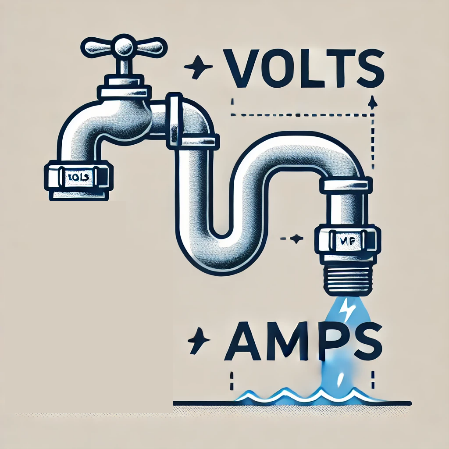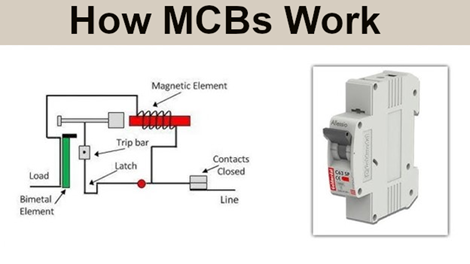Specifying the right miniature circuit breaker rating means efficient and safe electrical circuit performance.
Need Mini Circuit Breakers?
Get MCB QuoteSell To Us
Got Electrical Equipment You Don't Need?

Reduce Your Electrical Inventories & Earn Cash
Sell My EquipmentPanelboard
Need a Panelboard for Your Project/Job?

Our Experienced Sales Engineers Can Help Design the Right Panelboard For You
Learn MoreTransformer Oil Testing
Is Your Transformer Due For Servicing?

Get Your Oil Analysis & Fluid Testing Done By Our NETA-Certified Techs
Learn MoreElectrical Product Resources
Product Training Product Safety Product Guides Product News Featured Products- How Does a Miniature Circuit Breaker Work?
- Miniature Breaker Advantages Vs. Fuses
- Difference Between AC and DC Miniature Breakers
- Mini Circuit Breaker Ampere Ratings
- Understanding a Miniature Circuit Breaker Diagram
- FAQ: What to Know About Mini MCB’s
- Help Specifying the Right Breaker for Electrical Systems
If you’re selecting Miniature Circuit Breakers (MCBs), you quickly learn they are small but powerful devices that protect electrical circuits against overloads and short circuits.
Unlike fuses, they are reusable and designed to trip automatically when they sense an electrical overload, protecting your system. Their small size and dependability make them valuable in residential, business, and industrial settings.
How Does a Miniature Circuit Breaker Work?
Like water Flowing Through a Pipe
Miniature circuit breakers work by detecting unusual currents. Inside, a thermal or magnetic device detects excess current and blocks the flow to protect your wiring and equipment. Whether you’re working with an AC or DC miniature breaker, the idea is the same.
Voltage (Volts) Like water pressure. It pushes the water (electricity) through the pipe. The higher the pressure, the harder it pushes.
Current (Amps) like the amount of water flowing through the pipe. It’s the flow rate — how much water (electricity) is moving at a given time.
Resistance (Ohms):
Resistance is like a narrow section in the pipe or an obstacle (like a sponge or rocks). It slows down the flow of water (electricity).

Miniature Breaker Advantages Vs. Fuses
If you’re selecting miniature circuit breakers or replacing mini breakers, note the difference between fuses and miniature circuit breakers. Fuses are one-time-use devices, so they must be replaced after a fault occurs. MCBs, on the other hand, are reusable and allow for multiple trips without replacement. They’re quicker, more dependable, and easier to maintain. Also, MCBs let you fine-tune protection by selecting miniature circuit breaker ampere ratings.
Difference Between AC and DC Miniature Breakers
Not every MCB is the same. AC and DC miniature breakers handle entirely different power sources. AC MCBs are standard in homes and businesses, while DC MCBs are perfect for solar panels or battery systems. Each has particular features that allow it to safely and efficiently handle its own current. Before selecting miniature circuit breakers from a breaker parts catalog listing major manufacturers, carefully consider the requirements of your system.
Mini Circuit Breaker Ampere Ratings
Ampere ratings represent how much current a circuit breaker can tolerate before tripping. Common miniature circuit breaker current ratings include 6A, 16A, 32A, and others, each designed for a specific use. Lower ratings, for example, protect fragile electronics, whereas higher ratings are best for industrial equipment. Selecting the right rating means that your MCB operates efficiently and without additional trips or dangers.
Understanding a Miniature Circuit Breaker Diagram
To get a better understanding when selecting and installing miniature circuit breakers and testing breakers, the miniature circuit breaker circuit diagram illustrates how it works step by step. Beginning with the incoming Load (see diagram), current enters and either opens or closes Electrical Contacts.
During an overload or short circuit, the contacts automatically open, breaking the circuit to stop the current and protect the system from damage.

Here’s a generic table that can help you select miniature circuit breakers (MCBs) based on your system’s requirements:
| Attribute | Options/Values | How to Choose |
| Ampere Rating (A) | 6A, 10A, 16A, 20A, 25A, 32A, 40A, 63A | Match to the expected load current of your system. |
| Voltage Rating (V) | 120V, 240V, 415V | See that it matches your system voltage (e.g., residential, commercial, or industrial applications). |
| Number of Poles | 1P, 2P, 3P, 4P | Depends on whether the circuit is single-phase, three-phase, or requires neutral protection. |
| Breaking Capacity | 6kA, 10kA, 16kA | Choose based on the potential short-circuit current in your system. |
| Type (Trip Curve) | B, C, D, K, Z | Select based on load type: resistive (B), inductive (C), heavy machinery (D), motors (K), or sensitive electronics (Z). |
| Frequency | 50Hz, 60Hz | Match your system’s operating frequency. |
| Application Type | Residential, Commercial, Industrial | Match the breaker to the use case for proper safety and performance. |
| Additional Features | Lockouts, Indicators, Remote Control, Arc Fault Protection | Help with safety, maintenance, or automation. |
FAQ: What to Know About Mini MCB’s
🟥 1. What is the benefit of using miniature circuit breakers?
🟩 Miniature circuit breakers (MCBs) are important for electrical safety. They protect circuits from overloads and short circuits, preventing equipment damage, lowering fire hazards, and maintaining continuous power supply in homes, workplaces, and businesses.
🟥 2. Can a miniature circuit breaker be reset after tripping?
🟩 Yes. One of the key advantages of an MCB is that it can be reset after tripping. Unlike a fuse that must be replaced, an MCB can be reset manually, making it more convenient and cost-effective.
🟥 3. What is the difference between a fuse and a miniature circuit breaker?
🟩 The main difference is reusability. A fuse needs replacement after it blows, while an MCB can be reset after tripping. MCBs are faster, more reliable, and allow specific miniature circuit breaker current ratings for better protection.
🟥 4. What are AC and DC miniature breakers used for?
🟩 AC miniature breakers are used for alternating current systems, like homes and businesses, while DC miniature breakers are for direct current systems like solar panels and battery setups. Each is designed for its respective current type.
🟥 5. How do I choose the right ampere rating for my MCB?
🟩 The miniature circuit breaker ampere rating depends on the load you need to protect. Lower ratings suit electronics, while higher ratings are for heavy-duty equipment. Selecting the right rating means efficient and safe circuit operation.
🟥 6. What is a miniature circuit breaker lockout?
🟩 A lockout device prevents an MCB from being accidentally switched on during maintenance or repairs. This gives worker safety and compliance with regulations like OSHA standards, especially in industrial and commercial settings.
🟥 7. Where can I find miniature circuit breakers for my system?
🟩 Use a miniature circuit breaker catalog to find breakers with the right ratings, designs, and features for your needs. Look for products that match your system’s current type (AC or DC) and load requirements.
Help Specifying the Right Breaker for Electrical Systems
Ready to explore your options? Contact a specialist or shop Relectric’s online catalog for various AC and DC miniature breakers, ampere ratings, and lockout options for any application. Whether you’re protecting a residential property or managing a complex industrial system, we have a solution. Contact a specialist to find the right fit for your project.
Contact a Specialist: 800.497.6255
Looking for Circuit Breaker Troubleshooting Tips and Advice?
Common Circuit Breaker Problems
How to Replace a Circuit Breaker
How to Test a Circuit Breaker
Installing Circuit Breakers
Types of Circuit Breakers
